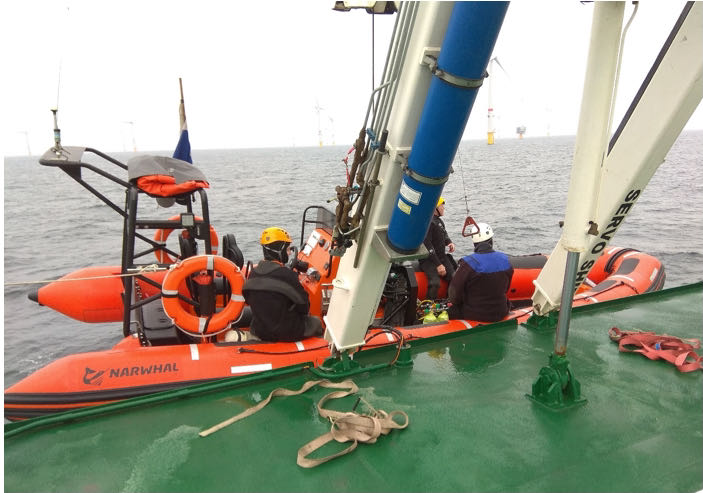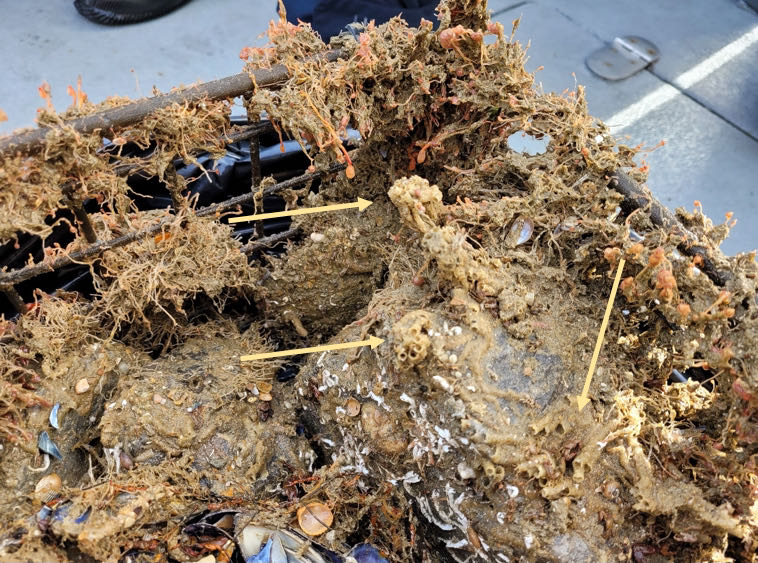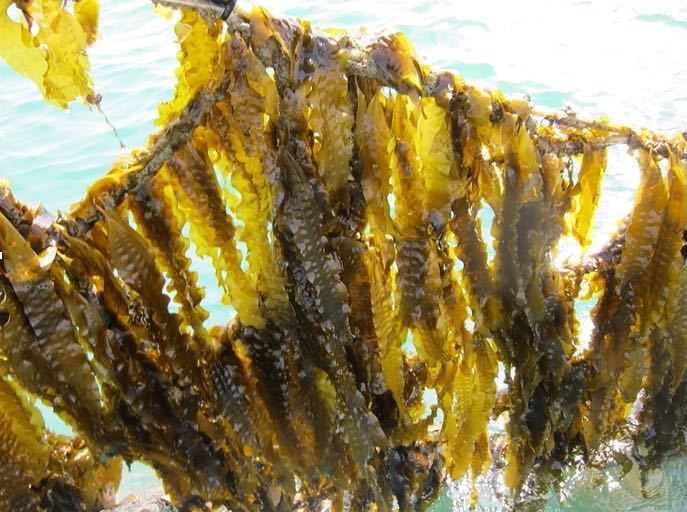Results of the first offshore diving missions and 2022 seaweed check-up within the Belgian pilot

Diving from the new RV Belgica within the Belwind offshore wind farm. Divers ready to sample restoration structures filled with nature-inclusive scour protection, shell material and in part also with adult flat oysters Ostrea edulis to evaluate their settlement success and reef formation on the different materials.
A new year provides new adventures within the Horizon2020 project UNITED which focuses on offshore multi-use. The Belgian pilot combines aquaculture and ecological restoration of European flat oyster (Ostrea edulis) reefs with cultivation of sugar kelp (Saccharina latissima) in an offshore wind farm. Spring 2022 kicked off with some bright, and sunny days. This did not only allow to check up on the 2nd generation of seaweed nets at the nearshore site, but also gave us the opportunity to organise the first offshore diving campaign to inspect the restoration structures, fabricated by Jan De Nul Group and installed on the scour protection of several monopiles within the Belwind offshore wind farm.
Under the diving lead of dr. Alain Norro (RBINS), and through the coordination in the offshore wind farm by Parkwind, the restoration structures filled with nature-inclusive scour protection, shell material and in part also with adult flat oysters, were successfully sampled and brought on board for further inspection (Figures 1&2). Sampling was conducted with the new RV Belgica, where the spacious laboratories allowed for immediate processing of part of the samples. The RBINS and Ghent University-ARC team discovered successful settlement of juvenile flat oysters on both the scour protection (Figure 3) and the added shell material in numbers that have never been observed in the offshore wind farm zone of the Belgian part of the North Sea. An additional interesting observation is the presence of tube-building polychaete worms (Sabellaria spinulosa, Figure 4), which are, under certain conditions, capable of forming reefs, which was also observed here. Although these are only small-scale results, they are promising for future restoration efforts of biogenic reefs in the Belgian part of the North Sea.
At the same time, the Ghent University-Phycology and Brevisco team sailed to the nearshore site at Westdiep, 5 km off the coast of Nieuwpoort, to check up on the seaweed cultivation trials. For the seaweed, one of the aims is to determine the best feasible way to cultivate sugar kelp in the Belgian part of the North Sea. Following the first successful seaweed harvest in May 2021, the Ghent University-Phycology team is fine-tuning the best practices to optimise sugar kelp growth for the upcoming cultivation trials in the offshore wind farm of Parkwind in the next growing season 2022/2023. To do so, juvenile sugar kelp was seeded on different substrates using several techniques at the Marine Station Ostend (Flanders Marine Institute) and installed at Westdiep in November 2021. Over winter, these small juveniles of around 1 cm in length have grown substantially with good coverage of the seeded substrates (Figure 5), setting the scene for another successful harvest in May 2022.

Yellow lift bag visible at the water surface in front of one of the monopiles in Belwind. After connection to one of the restoration structures installed at the bottom of the monopile, this lift bag is inflated by the divers, and rises to the surface. This photo was taken right after the lift-bag with oyster restoration structure popped-up at the surface. Subsequently, these were retrieved on board for further processing.

Scour protection material with settlement of juvenile European flat oyster Ostrea edulis (circle)

One of the restoration structures filled with scour protection stones and shell material. The scour protection stone on the right clearly shows embryonic reef formation indicated by the tubes of the polychaete worm Sabellaria spinulosa (indicated by arrows).

Healthy looking sugar kelp Saccharina latissima during the spring inspection in April 2022 at the nearshore site (Westdiep, 5km off the coast of Nieuwpoort)
